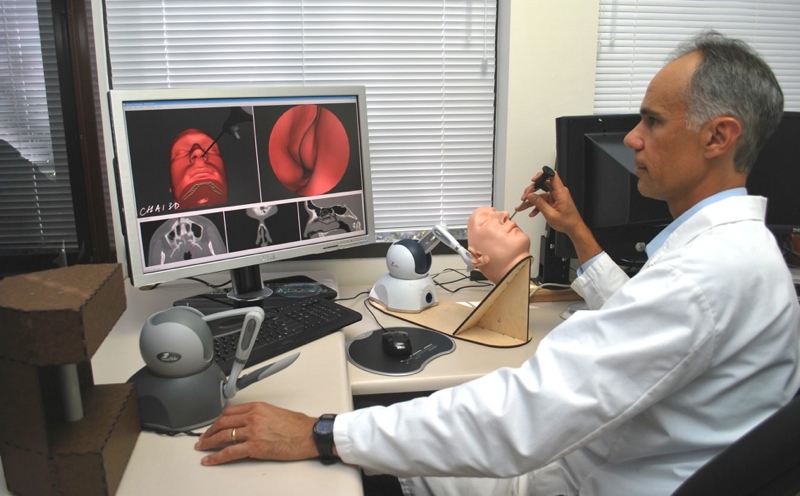Surgical Simulation concentrates on how to allow surgeons to practice surgery on a virtual patient and experience realistic sights, sounds, and forces like they were actually in the operating room.
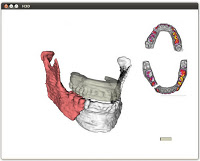 |
Design and Implementation of a Maxillofacial Surgery Rehearsal Environment with Haptic Interaction for Bone Fragment and Plate AlignmentWe are designing and implementing a haptics-enabled maxillofacial surgery rehearsal environment that requires little training and provides a direct high-fidelity immersive experience for the operator. |
 |
Deformable Haptic Rendering For Volumetric Medical Image DataVirtual-reality-based surgical simulation is one of the most notable and practical applications of kinesthetic haptic rendering. The prospect of patient-specific simulation using pre-operative medical images drives the need for haptic rendering algorithms that allow direct manipulation of volumetric data. This project attempts to address rendering of deformable tissue within medical images. |
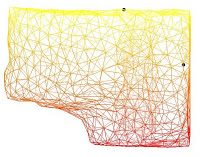 |
Real-Time Finite Element Analysis (FEA) in Haptic Surgical SimulationWe use nonlinear, real-time, FEA to simulate maxillomandibular advancement surgery, a clinical procedure used to reduce the severity of obstructive sleep apnea (OSA) and mitigate the risks of the co-morbidities associated with severe OSA |
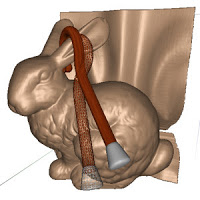 |
Six-DoF Haptic Rendering of Volumetric Data picturesWe developed a method for 6-DOF haptic rendering of isosurface geometry embedded within sampled volume data. The algorithm uses a quasi-static formulation of motion constrained by multiple contacts to simulate rigid-body interaction between a haptically controlled virtual instrument and volumetric isosurfaces. Unmodified volume data, such as computed tomography or magnetic resonance images, can be rendered directly with this approach, making it particularly suitable for applications in medical or surgical simulation. |
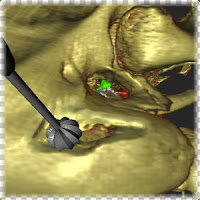 |
Surgical Rehearsal of TypanomastoidectomyOur virtual surgical environment constructs interactive anatomical models from patient-specific, multi-modal preoperative image data, and incorporates new methods for visually and haptically rendering the volumetric data. Evaluation of the system’s ability to replicate temporal bone dissections for tympanomastoidectomy showed strong correlations between virtual and intraoperative anatomy. |
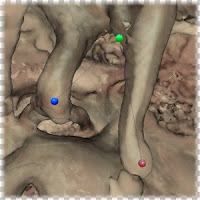 |
Morphometric Workstation for Middle Ear Micro-CTMiddle-ear anatomy is integrally linked to both its normal function and its response to disease processes. Micro-CT imaging provides an opportunity to capture high-resolution anatomical data in a quick and non-destructive manner. We have designed and developed a software workstation that provides an intuitive means of interacting with these data. |
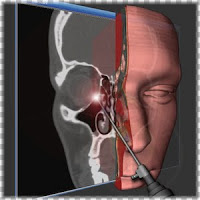 |
Endoscopic Sinus Surgery SimulationEndoscopic sinus surgery is a technically challenging procedure that could benefit from a virtual surgical rehearsal environment. We designed simulator capable of taking a pre-operative clinical CT scan and constructing a virtual 3D model of the patient on the fly. Surgically relevant anatomy seen during simulation can predict what may be encountered in the operating room. |
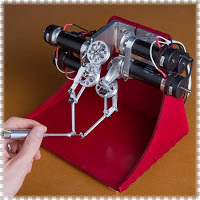 |
A 6-DoF Haptic Device for MicrosurgeryThe µHaptic device, a new six degree of freedom haptic device, was designed with microsurgical telerobotics and simulation in mind. The passive mass properties of a master device should closely approximate the mass properties of real surgical instruments in order to maximize transfer of the surgical motor skill, and we have designed this device with these objectives in mind. |
Past & Completed Projects
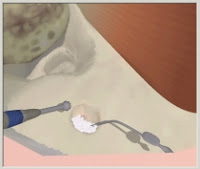 |
VR Environment for Bone SurgeryThe purpose of this project was to develop a training environment that can be used to teach both sensorimotor-level and task-level skills to surgical residents. The project focus was on the simulation of temporal bone surgery, with a particular emphasis on modeling the behavior of a virtual drill and its contact with bone tissue. |
